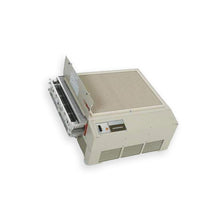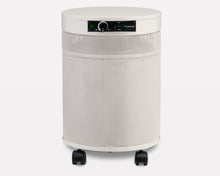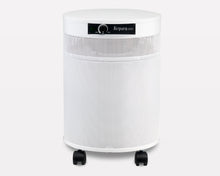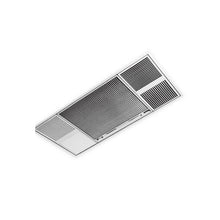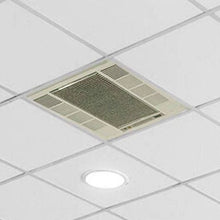Quick Guide: Choosing the Right Smoke Eater Technology (Carbon vs. Electrostatic) for Your Establishment

When it comes to clearing the air in your restaurant, bar, or smoking lounge, choosing the right smoke eater technology isn't just about compliance—it's about creating a comfortable environment that keeps customers coming back. With two main filtration approaches dominating the market, we'll help you understand which technology makes the most sense for your specific needs.
Understanding the Two Main Players
Activated Carbon Technology works like a molecular sponge. The carbon undergoes a special treatment process that creates millions of tiny pores, dramatically increasing its surface area. These pores trap odor molecules and volatile organic compounds (VOCs) through a process called adsorption—essentially pulling harmful particles right out of the air and holding onto them.
Electrostatic Technology takes a different approach entirely. These systems charge airborne particles as they pass through, then capture them on oppositely charged collection plates. Think of it as creating a controlled lightning storm that grabs particles before they can circulate back into your space.
Where Each Technology Shines
Activated Carbon: The Odor Elimination Champion
Carbon-based smoke eaters excel at what matters most to your customers: eliminating the smell. Research published in peer-reviewed studies has consistently shown that activated charcoal is "efficient at reducing many gas-phase toxicants from mainstream tobacco smoke", particularly the volatile compounds that create lingering odors.
Here's where carbon technology really delivers:
Superior Odor Control: Carbon doesn't just mask smells—it permanently captures odor molecules. Your establishment won't have that telltale smoky smell that clings to clothing and drives away non-smoking customers.
Chemical Vapor Removal: Beyond smoke particles, carbon systems capture chemical vapors from cleaning products, cooking odors, and other airborne contaminants that can affect air quality.
Consistent Performance: Unlike some technologies that lose effectiveness as they get dirty, quality carbon systems maintain their performance throughout their service life.
Lower Maintenance Complexity: While you'll need to replace carbon filters periodically, the maintenance is straightforward—no electrical components to troubleshoot or collection plates to scrub clean.
Electrostatic Systems: High-Volume Particle Capture
Electrostatic precipitators bring their own advantages, particularly for establishments dealing with heavy particle loads:
High Initial Efficiency: When clean, these systems can capture particles effectively across a wide size range.
Reusable Collection Plates: Instead of replacing filters, you wash the collection plates, which can reduce long-term operating costs.
Particle Size Versatility: Electrostatic systems can capture both large and small particles in a single pass.
The Reality Check: What to Consider
While both technologies have their strengths, real-world performance depends heavily on your specific situation. Here are the factors that matter most:
Maintenance Reality: Electrostatic systems require regular, thorough cleaning of collection plates to maintain efficiency. Research indicates that "when the collection surface gets dirty this efficiency drops significantly." If your maintenance schedule isn't rigorous, performance suffers noticeably.
Ozone Concerns: Some electrostatic systems can produce ozone as a byproduct, which may be a consideration for enclosed spaces with limited ventilation.
Volume vs. Intensity: High-volume establishments with moderate smoke levels might favor electrostatic systems, while businesses dealing with intense smoke (like cigar lounges) often find carbon technology more effective at maintaining air quality.
Cost Structure: Carbon systems have ongoing filter replacement costs, while electrostatic systems have higher upfront costs but lower ongoing expenses if properly maintained.
Making Your Decision
The right choice ultimately depends on your establishment's specific needs:
Choose Activated Carbon If:
- Odor elimination is your top priority
- You prefer straightforward maintenance
- Your space has intensive smoke exposure
- Customer comfort and air freshness are critical
Choose Electrostatic If:
- You have high particle volumes but moderate odor concerns
- You can commit to regular, thorough maintenance
- Long-term operating costs are a primary consideration
- Your space has good ventilation for any potential ozone concerns
The Bottom Line
Both technologies can effectively clean your air when properly implemented and maintained. The key is matching the technology to your specific environment and operational capabilities. Carbon systems typically provide more consistent odor control with simpler maintenance, while electrostatic systems can offer cost advantages for high-volume applications with proper upkeep.
Remember, the best smoke eater is the one that gets maintained according to manufacturer specifications. A well-maintained system using either technology will significantly outperform a neglected system, regardless of the underlying technology.
When evaluating systems, ask potential suppliers for performance data specific to your type of establishment, and don't hesitate to request references from similar businesses. Your investment in air quality technology should deliver measurable improvements in customer comfort and operational efficiency—and the right system will do exactly that.


